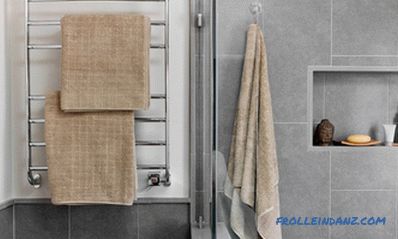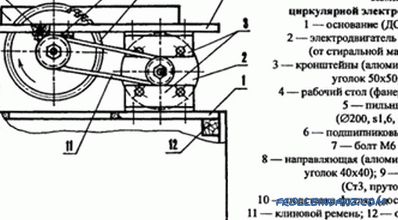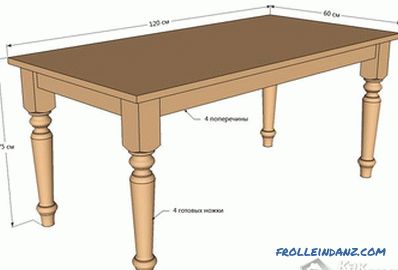During the heating process, the fluid that is used as the heat transfer fluid circulates throughout the system. In order not to lose useful heat and avoid unnecessary overheating of the room, the heating pipelines are insulated.
Such works are necessary in country houses if the heating pipelines run along the street from the boiler room, or when the boiler is located in the far wing of the building and the pipes are stretched along cold corridors. It helps to deliver more heat to the premises, keeping it on the whole route: from the boiler room to the radiators.
Several types of heaters are used as a material, they differ in thermal conductivity and installation methods, and when choosing a material you need to know at least a little about its qualities.
Foamed polyethylene
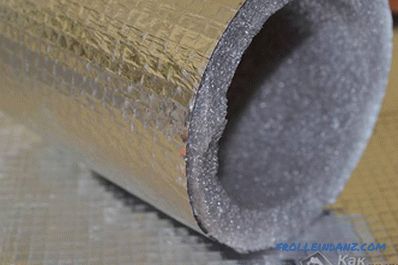 Foil foamed polyethylene
Foil foamed polyethylene
This is a flexible insulation that is made in the form of pipes of various sizes, with a slit in the middle (this is done for ease of installation).
Installation
When insulating the pipeline with this material, pieces of insulation are superimposed on the pipes along the entire length, and are tightened with construction tape. Places of joints or pipe joints should be closed with insulation of a thicker diameter. Therefore, before starting work, it is necessary to roughly calculate the required amount of insulation of different sizes.
A heater of such a mark is very convenient, it can be easily cut, and the remaining pieces can be used in another place, making one long piece of several pieces.
Fiberglass Insulators
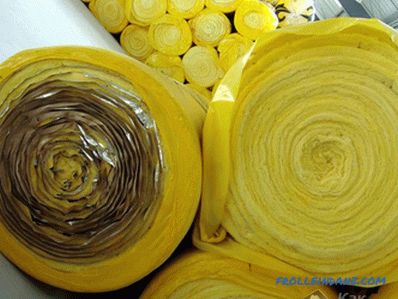 Fiberglass Insulation
Fiberglass Insulation
This insulation is the most in demand from builders. This material has a relatively small weight and is completely not subject to rotting. That is why it is often used for insulating pipes located on the street.
Installation
When installing the insulation, wind the pipes and fix it with the help of a crochet wire. For additional protection from moisture from the outside it is tied with roofing felt or construction foil.
Basalt wool
 Basalt wool
Basalt wool
These are molded insulation elements that are made in the form of plates and cylinders. Such heaters are fireproof, have good strength and do not pass moisture. Its installation is quite simple, as in the case of fiberglass insulation, it is additionally protected with aluminum foil or roofing felt.
Expanded polystyrene
 Expanded polystyrene for pipes
Expanded polystyrene for pipes
Such insulation is made in the form of two shells different sizes, they are fastened using special grooves, but for the reliability of the connection, they must be additionally secured with special glue or tape.
Installation
When connecting, on the pipes, the insulator halves are interconnected and the two parts are displaced in different directions by several centimeters. The next link is also connected, and the left ends are joined to each other, it turns out a kind of "overlap" of one connection to another, which provides a better bond.
For warming uncomfortable sections and turns, curly shells are used that are of unequal size.
In order to conduct high-quality insulation with this material, you need to calculate in advance the length of the pipeline, the number of joints and folds. It is necessary to purchase the required number of connecting parts.
Polyurethane
 Polyurethane insulation
Polyurethane insulation
This insulation is applied by spraying . Specially prepared composition is sprayed onto the mounted pipeline. It adheres reliably to the surface and, foaming, forms a dense protective mass with high strength.
Due to the fact that this insulation does not tolerate exposure to the sun's rays, the insulation of pipes located in the open air must be accompanied by their protection: winding with roofing felt or aluminum foil.
Insulants can be combined to insulate pipes of high quality. For example, in the boiler room and on the street they can be closed with mineral wool or basalt insulation. And in the house there are connections to the radiators - foamed polyethylene, which looks more aesthetic.
Liquid thermal insulation
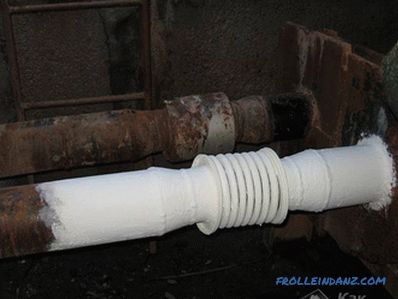
This material, which is used to isolate heating pipes, will eliminate some of the difficulties encountered in the process of installing other insulants.
The more the better ...
This slogan refers to the installation of such insulation. It is applied with a spray or a regular brush, and the more layers will be applied to the pipe, the better will be kept warm. And the process itself is much easier to install other types of insulation. It can be applied without problems both on a flat pipe, located in good accessibility, and on hidden uncomfortable areas.
When you need to take care of pipe insulation
It is best to install the insulation in the process of laying pipes and branching in the room. At this stage, it will be easier for you to choose the dimensions (when choosing a coiled or tubular heater), and as a result there will be less waste, and this, respectively, will save money.
Repair of insulation
 Replacing insulation
Replacing insulation
With all the positive qualities of all kinds of materials It will not be out of place to conduct a routine inspection of the entire heating line before the onset of the winter season. In order to avoid trouble later, the place of insulation, which due to any circumstances has become unusable, must be replaced.
Video
Mineral wool cylinder mounting video:
Photos
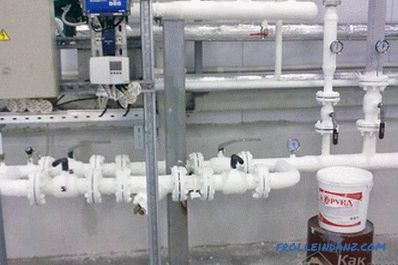 Usage liquid heat insulation of heating
Usage liquid heat insulation of heating
 Casing for pipes
Casing for pipes
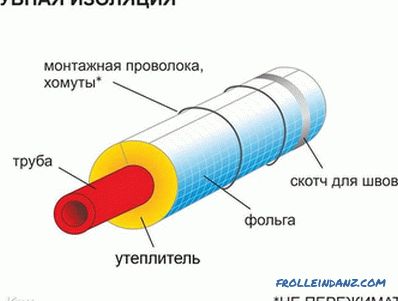 Pipe insulation technology
Pipe insulation technology
 Thermal insulation with basalt
Thermal insulation with basalt
